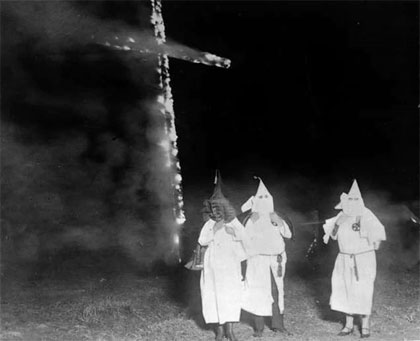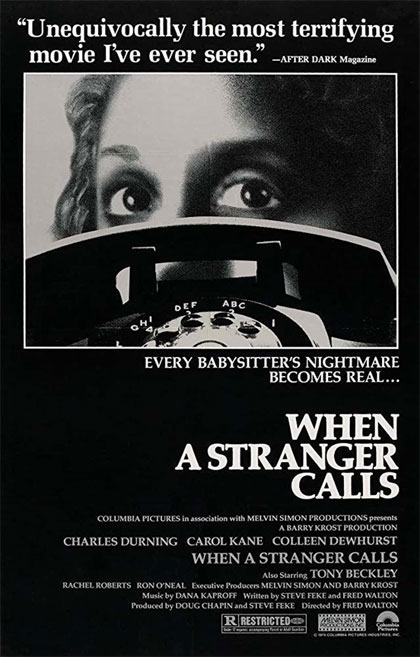
Scary Urban Legends You Didn’t Realize Are Based On Real Stories
Lyra Radford
Humankind has been passing along legends and folklore since we’ve been able to communicate. The good news is, while many contain kernels of truth, the majority of the creepy legends shared in hushed tones over roaring fires aren’t true. Most are just exaggerated stories meant to scare listeners and sometimes impart some sort of life lesson. Urban legends wrap up society’s fears in an attention-catching narrative that can be safely enjoyed for thrills, all the while knowing that it’s all just a tall tale.
The thing about urban legends, though, is that sometimes they are true. It’s as if “legend-ifying” a horrific event is a way to cope and help people move on, while also shielding younger generations from ugly truths. Collected here are some of the world’s most terrifying true urban legends.
________________________________________
• Charlie No-Face
 Video: YouTube
Video: YouTube
Children living in the Pittsburgh, PA, area tell tales of Charlie No-Face, sometimes also called the Green Man. It’s said that Charlie was a utilities worker disfigured in a horrible accident: some versions of the legend say it was acid, some say it was an electric power line. In some versions, the accident turned his skin green, but in every variation, Charlie’s face is melted off.
According to the lore, he wanders in dark, foreboding places, like the old abandoned railway access tunnel in the South Park Township, often referred to as the Green Man’s Tunnel. For years, local teens have driven into the tunnel awaiting sightings of Charlie No-Face. Many say they have felt an electrical charge from his presence and had problems getting their cars to start back up after calling out to him. Others have claimed to see his glowing ghost in the tunnel or along rural roads at night.
As it turns out, there is a tragic truth behind this old legend. Where the idea of a man working for the power company came from is anyone’s guess, but Charlie No-Face was actually Raymond Robinson. Back in 1919, Raymond was playing near an electrical power line and he ended up being electrocuted. His nose was burned off, one of his arms and both of his eyes were scorched, but he did survive. Raymond spent the rest of his life keeping to himself, only venturing out for walks at night, but he was, by all accounts, a friendly man.
• The Killer Hiding In Your Attic
 Photo: Jamie Beverly / Flickr / CC BY-SA 2.0
Photo: Jamie Beverly / Flickr / CC BY-SA 2.0
This terrifying tale has been around for a long time. It tells of a family who unknowingly lives with a murderous squatter that’s been hiding out in their attic for weeks or months. Things go missing or are moved, they find mysterious items in the trash, perhaps they joke about having a ghost, all before finally being slaughtered in their sleep by the freak living in their walls. The reason this story has always been so frightening is because it could easily happen – and it actually has.
It all began in March 1922 on a German farm named Hinterkaifeck. Andreas Gruber, the owner, started noticing small things missing or out of place. His family reported the sound of footsteps and Andreas himself found footprints, but no person. By the end of March, the source of those footsteps descended from the attic and brutally murdered Andreas, his wife, their adult daughter, Victoria, Victoria’s two children, and their housekeeper, Maria Baumgartner, all with a mattock (similar to a pickaxe). Their bodies weren’t discovered until four or five days later; all the while, someone had still been caring for the farm animals. The identity of the killer remains a mystery to this day.
• The Night Doctors
 Photo: Denver News / Wikimedia Commons / Public Domain
Photo: Denver News / Wikimedia Commons / Public Domain
The Night Doctors (sometimes called Night Riders or Klan Doctors) stem from African American folklore, predominantly in Georgia and Alabama. Many stories were told by slave masters to keep the people they enslaved fearful of leaving even after they were free to do so.
This particular story tells of doctors who would ride at night, abducting Black workers to perform experiments on them. The Night Doctors would snatch people off the streets and take them to medical facilities to dissect, torture, and kill them, then harvest their organs. New Orleans had similar bogeymen, but they were called Needle Men or Black Bottle Men. They would stick people with needles full of mysterious deadly toxins or use black bottles of poison so they could take the bodies back to Charity Hospital or John Hopkins Hospital for student doctors to dissect.
These stories of white doctors victimizing Black communities have roots in some horrific truths. During the early 19th century, grave robbing to provide medical students with cadavers was a huge issue and Africans Americans were powerless to protect their dead. Also, doctors and medical students really were performing surgeries on living members of the Black community. Southern teaching hospitals would only perform live surgical techniques for medical students on African American patients.
As if that weren’t bad enough, in 1932, Alabama’s Public Health Service and Tuskegee University launched the Tuskegee Syphilis Study. They took 600 African American men; 399 already had syphilis and 201 did not. These men were given food and burial insurance and were promised free medical care, but the funding for the study was lost and no one bothered to tell the participants.
Investigators wanted to observe the progression of the disease, so they kept going and told patients they were being treated for “bad blood.” They never told them they had syphilis or that the standard treatment was penicillin, which they did not give them. The Tuskegee scientists made the decision to withhold medication from their patients as well as information about their condition.
These facts, paired with slave masters in white sheets pretending to be ghosts on horseback riding around at night (a tradition later continued by the Klu Klux Klan after the Civil War), gave the African American community a very real fear of the Night Doctors legend.
• The Alice Killings
 Photo: Trocche100 / Wikimedia Commons / Public Domain
Photo: Trocche100 / Wikimedia Commons / Public Domain
The Alice Killings is a fairly new urban legend circulating in Japan. According to the tale, a string of murders happened in Japan between 1999 and 2005. The victim’s bodies were mutilated, with limbs torn off, and the name Alice was written somewhere nearby in the victim’s blood.
Police also found one playing card carefully placed at each gruesome scene. The first victim was found in the woods, impaled by tree branches. The second victim had his vocal cords torn out. The third, a teenage girl, had her skin flayed, her mouth sliced open, her eyes carved out, and a crown sewn to her head. The final two victims were twins: the children had been given lethal injections while they slept.
Allegedly, police made one arrest in 2005 when a suspect was found wearing a jacket that belonged to one of the victims, but they couldn’t connect him to any of the crime scenes. The man claimed the jacket was given to him by a demon with no face. Then, a morbid song called Hitobashira Arisu (which roughly translates as “Alice of Human Sacrifice”) was released in Japan by a producer known as Yugami-P in 2008. The song detailed the killings and mentioned some distorted dream world (perhaps where this faceless demon lives). It’s widely believed the killer wrote this song, but they have yet to be found.
The truth is, there were no “Alice Killings” in Japan. However, just before this legend was born, a real-life serial killer known as the Playing Card Killer was terrorizing Madrid, Spain. Police were out in full force back in 2003 trying to find the person responsible for murdering six people and injuring three more – each time leaving a playing card on the bodies. Authorities were at a loss; there was no clear connection between the victims and no evident motive.
They knew they were dealing with a psychopath choosing victims at random. They may never have found him if he didn’t waltz right in and confess. The Playing Card Killer turned out to be Alfredo Galán Sotillo. Alfredo changed his story multiple times and even denied the killings shortly after confessing, claiming a Nazi was forcing him to confess to the murders. Nazi conspiracy or not, Alfredo was sentenced to 142 years in prison.
• The Legend Of Cropsey
 Photo: Unknown / Wikimedia Commons / Public Domain
Photo: Unknown / Wikimedia Commons / Public Domain
The people of Staten Island have been telling stories of Cropsey for decades. Cropsey is said to be a deranged ax murderer that escaped from an old mental asylum and now lurks in the tunnels beneath the abandoned Willowbrook State School. They say Cropsey comes out at night to hunt children: some say he has a hook for a hand, others claim he wields an ax. No matter the weapon, the motive is always the same – he drags children back to the ruins of Willowbrook and hacks them to pieces.
As it turns out, Staten Island’s boogeyman was real. Andre Rand had a history of abducting and endangering children. He was also a janitor for the Willowbrook School prior to its closure for its hazardous environment and for the physical, emotional, and sexual abuse of disabled children living there. Rand went back to the ruins to live in its tunnels and commit atrocities in its surrounding woods. Disabled children started to go missing and the body of 12-year-old Jennifer Schweiger was found near Rand’s camp near Willowbrook. Rand was charged with Jennifer’s murder and then eventually the murder of another missing child, Holly Hughes.
They were never able to prove he committed the murders but were able to convict him of kidnapping. He remains in prison for his involvement in the kidnapping and disappearance of Schweiger and Hughes.
• The Babysitter And The Man Upstairs
 Photo: When a Stranger Calls/Columbia Pictures
Photo: When a Stranger Calls/Columbia Pictures
The babysitter and the killer upstairs is a classic urban legend dating back to the 1960s. In it, a teenage girl receives a series of creepy telephone calls while babysitting. In most versions, the caller asks her, “Have you checked the children?” The babysitter has the calls traced and finds they’re coming from inside the house. In some versions, she finds the children dead; in others, she is the one brutally murdered.
Prior to this tale’s circulation, there was a horrific rape and murder of a 13-year-old girl named Janett Christman while she was babysitting in Columbia, Missouri. On March 18, 1950, a storm was brewing outside when Janett put three-year-old Gregory Romack down to sleep. Sometime before the family returned at 1:30 AM, someone had shattered a window, forced their way in, and viciously raped and brutalized Christman before strangling her to death with an iron cord and hitting her over the head with a blunt object.
Robert Mueller had made unwelcome advances towards Janett and has been long believed to be responsible for Janett’s death and the death of Marylou Jenkins, a 20-year old who was murdered in the exact same manner as Janett back in 1946. There had also been multiple unsolved rapes in between the murders, all in the same area. Unfortunately, the evidence against Muller was circumstantial, and he was never charged with murder.
• The Bunny Man
 Photo: Secretsqurl / Wikimedia Commons / Public Domain
Photo: Secretsqurl / Wikimedia Commons / Public Domain
The legend of the Bunny Man started to spread around 1970, and like most urban legends, it has many variations. The most common telling begins in 1904, when a local psychiatric facility in Clifton, Virginia, is shut down and its patients are transferred to another facility. Several patients escape during the transfer process. They are successfully rounded up… all except one, that is.
Douglas Griffon, who was locked up for killing his entire family on Easter Sunday.
Soon after his escape, skinned and mauled rabbit carcasses begin appearing in the trees and dangling from the Colchester Overpass. Then one day, a human body was found, a man named Marcus Wallster. His body was dangling from the underpass in the same gruesome condition as all the rabbits. Police cornered the madman, who tried to bolt but was hit by an oncoming train instead.
Now, his spirit haunts the area, still hanging rabbit carcasses from the Colchester Overpass, which is now dubbed the Bunny Man Bridge. Some have even sworn to see the Bunny Man himself, lurking in the shadows of the underpass. Locals believe anyone who dares enter it on Halloween night will be found dead and dangling from the bridge by morning.
As gruesome as the legend is, it’s clearly just a legend. There was never an asylum in the area, and there was never a Douglas Griffin or a Marcus Wallster living there. The truth in this tale is simply the existence of a madman with a thing for bunnies.
Some guy would get dressed up in a full bunny costume and terrorize the people of Fairfax County back in the 1970s. Although several residents have reported sightings of the man, his identity is unknown.
• The Hook Man
 Photo: Texarkana Daily News / Wikimedia Commons / Public Domain
Photo: Texarkana Daily News / Wikimedia Commons / Public Domain
One of the most widely told urban legends is “The Hook.” It has many variations, each a bit more gruesome than the last, but the tale in its purest form begins with a couple making out in a car parked on Lover’s Lane. The radio crackles, a news report interrupts the romance to tell listeners an escaped killer with a hook for a hand is on the loose. The couple just so happens to be in range of the lunatic, so the girl insists they go home at once. The boy is irritated, but he peels out and takes her home. Upon arrival, the couple exit the car to find a bloody hook dangling from the handle of the passenger side car door handle.
Whether the couple make it home safely or the boy ends up dead and dangling from a tree with the girl listens to the sound of his fingers scraping the roof of the car – it’s no coincidence these tales spread like wildfire in 1950, right after the real-life “Moonlight Murders” plagued Texarkana in 1946. It’s fair to say the Texarkana Moonlight Murders gave birth to the Hook Man Legend that has been considered by many to be no more than a cautionary tale to discourage teens to have sex.
Wearing a sack with eye holes cut out over his head, the killer brutally murdered couples parked in their cars at night. Terrified residents scampered home before curfew each night as authorities on both the Arkansas and Texas side struggled to identify the elusive “Phantom Killer.” But they never did; the killings stopped as quickly as they began and the Phantom disappeared into the night.
• The Dog Boy
 Photo: Unknown / Wikimedia Commons / Public Domain
Photo: Unknown / Wikimedia Commons / Public Domain
Quitman, Arkansas’s homegrown urban legend is that of Dog Boy. According to locals, Dog Boy was once a living and very sadistic little boy who liked torturing small animals and, eventually, his own parents, before his death and apparent development of paranormal powers from beyond the grave. Now, he haunts the house where he terrorized his parents; his ghost appears to be some kind of dog-human hybrid and still enjoys inflicting fear and pain in people.
Witnesses describe him as being a large, shaggy dog-like creature with the eyes of a cat. Allegedly, those who pass his house can see him peering out the front window and some have been chased down the street by a spectral beast on all fours.
The truth is, the old house at 65 Mulberry in Quitman, Arkansas, was home to a vicious kid by the name of Gerald Bettis. Bettis did have a habit of collecting neighborhood animals to bring home to torture and, eventually, he had an additional room added to the house to keep his animals in. Bettis became a mammoth of a man, standing at 6’4″ and weighing 300 pounds, and he was known to be abusive to his parents. It’s believed he murdered his father, although there is no proof that he caused his father to fall down the stairs and break his neck. After that, he continued to abuse his elderly mother, keeping her cooped up and often unfed. Adult protective services had to step in and take his mother out of the house. His mother testified against him for the abuse and for growing and selling marijuana at the house. Bettis was sent to prison and was found dead of a drug overdose in the mid-’90s.
• Black Water
 Photo: Jim Winstead / Flickr / CC BY 2.0
Photo: Jim Winstead / Flickr / CC BY 2.0
This cringeworthy legend begins with a family purchasing a new home. Everything is perfect until they turn on a sink and murky, black, sour-smelling water comes out. Further inspection of the tank reveals a rotting corpse that’s contaminated the water supply. When this story began life as a legend is uncertain, but this disgusting scenario has really happened.
The body of Elisa Lam was discovered in the water tank of the Cecil Hotel in Los Angeles, California, in 2013. The circumstances surrounding her death remain a mystery, but her body had been in the tank liquefying for a week before the guest’s complaints of the sour-tasting water finally got maintenance out to check the tanks.
• Bloody Mary
 Photo: Unknown / Wikimedia Commons / Public Domain
Photo: Unknown / Wikimedia Commons / Public Domain
According to the incredibly scary folkloric tradition of Bloody Mary, in order to conjure the maleficent apparition, all you have to do light some candles, dim the lights, and mutter Mary’s name while staring into a mirror. And once she appears, there’s a whole host of potential things she might do that range from the benign to the downright terrifying.
According to some psychologists, it really is possible to see someone else staring back at you if you gaze into a mirror long enough, so Bloody Mary likely didn’t just appear out of thin air. Italian psychologist Giovanni Caputo calls this phenomenon the “strange-face illusion.” Basically, according to Caputo, if you stare at your own face in a mirror long enough, your visual field will start to distort – lines and edges will begin to lose their distinctions – and your face will begin to look different. This is also the phenomenon behind things like seeing faces in inanimate objects.
• Si Ouey
Since the 1950s, parents in Thailand in need of a boogeyman to strike some fear into their misbehaving children have told them that Si Ouey (in some reports called Si Quey) might come after them. Si Ouey was a real person executed in September 1959 by firing squad for supposedly slaying up to seven children and eating their organs. He reportedly confessed to the slayings, but not the cannibalism. His blackened, mummified corpse was on display for many years at the Siriraj Hospital’s Medical Museum in Bangkok.
In recent decades, TV documentaries questioned the allegations against Si Ouey, noting that at the time he was a poor Chinese immigrant who might have faced anti-immigrant bias and sensationalist treatment from media. An online petition started in 2018 asked for Si Ouey to no longer be called a “cannibal” and to receive a proper funeral. The museum removed “cannibal” from its display sign in June 2019 and took down the display in August 2019. Si Ouey’s body was cremated in July 2020 at a ceremony attended by monks, hospital officials, and residents of his former town.
Resident Wannapa Thongchin, whose parents employed Si Quey, said at the funeral: “Villagers spoke of him as a good person. It made me feel sorry for him. It was as if he was being tormented, so we had to find a way to bring him out of the glass box.”
• Polybius Video Game Experiment
 Photo: DocAtRS / Wikimedia Commons / CC BY-SA 3.0
Photo: DocAtRS / Wikimedia Commons / CC BY-SA 3.0
In 1981, video gamers in Oregon were in mortal terror of a new arcade game called Polybius that was popping up in Portland suburbs. The thing about this special game – which could be seen with lines forming around it shortly after its arrival – is that it was like a drug. Gamers became addicted to the point of hallucinations, amnesia, night terrors, and insomnia. And that wasn’t all. Men in black would routinely come collect the data gathered by Polybius on its addled, addicted users. These men – agents of the government – were subliminally controlling users. And then the game just disappeared.
In reality, there was a game called Tempest released around that time that caused users to experience nausea and motion sickness, and the FBI (men in black) did conduct raids on a few arcades for gambling issues on the parts of the owners. That same year, two young video game players became ill from the games they were playing. It’s easy to see where the legend might have come from.
Graveyard shift
Ranker.com




















